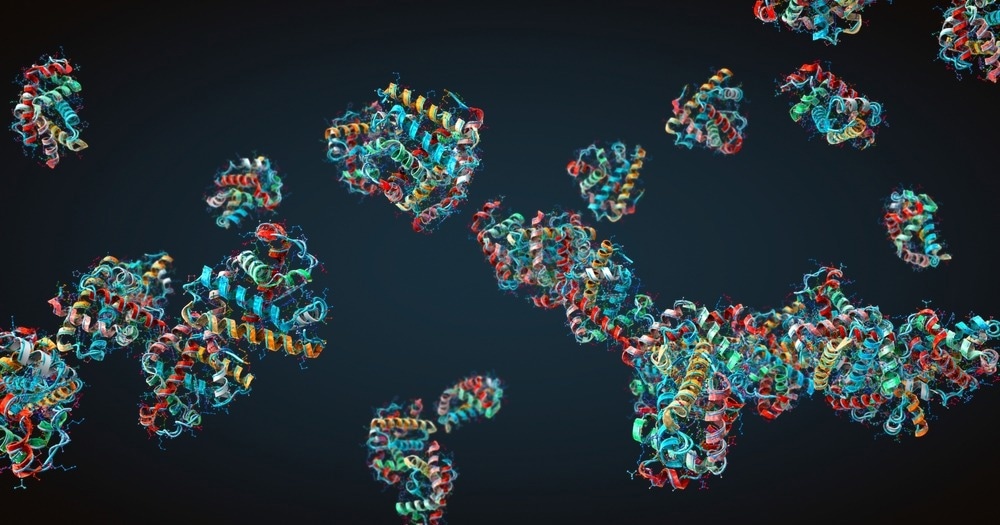Proteomics and clinical diagnostics will be transformed by new protein sequencing technologies with better sensitivity and throughput.

Image Credit: V/Shutterstock.com
A research team led by Professor Haichen Wuof the Chinese Academy of Sciences (CAS) Institute of Chemistry and Professor Lei Liu of the CAS Institute of High Energy Physics, along with their collaborators, established a novel approach to peptide sequencing based on host-guest interaction-assisted nanopore sensing, which was published in Nature Methods.
The history of protein sequencing can be traced to Sanger’s discovery of the whole amino acid sequence of insulin in the 1950s. Currently, there are just two primary techniques available for protein sequencing: mass spectrometry and Edman degradation.
Nanopore sensing is the latest “disruptive” single-molecule method that has gained significant traction in developing next-generation DNA sequencing over the last few decades. Scientists are now using single-molecule protein sequencing thanks to this inspiration.
Achieving a unidirectional transport of heterogeneously charged peptide chains through a nanopore and the electrical identification of 20 distinct amino acids or their combinations are two of the enormous obstacles facing protein nanopore sequencing.
This study’s alternative sequencing approach was put forth by the researchers on the basis of a better host-guest interaction-assisted nanopore sensing method.
First, a mixture of amino acids was obtained using carboxypeptidases to degrade the model peptides. Next, it was crucial to use a covalent linker to tie the liberated amino acids to an FGGCD8⊂CB[7] peptide probe. After that, the complex was put through translocation tests using either wildtype α-hemolysin or its mutations.
Finally, the amino acid X was identified by the current blocking of each FGGC(X)D8⊂CB[7] peptide, and the order of the enzymatic cleavage, or the peptide sequence, was ascertained by their relative abundance.
This study represents a proof-of-concept demonstration of a new technique that can accurately ascertain a peptide’s amino acid sequence. This represents a substantial improvement and opens up a viable option for the future of protein sequencing, even though notable restrictions still exist.
Journal Reference:
Zhang, N., et al. (2023) Peptide sequencing based on host–guest interaction-assisted nanopore sensing. Nature Methods. doi:10.1038/s41592-023-02095-4